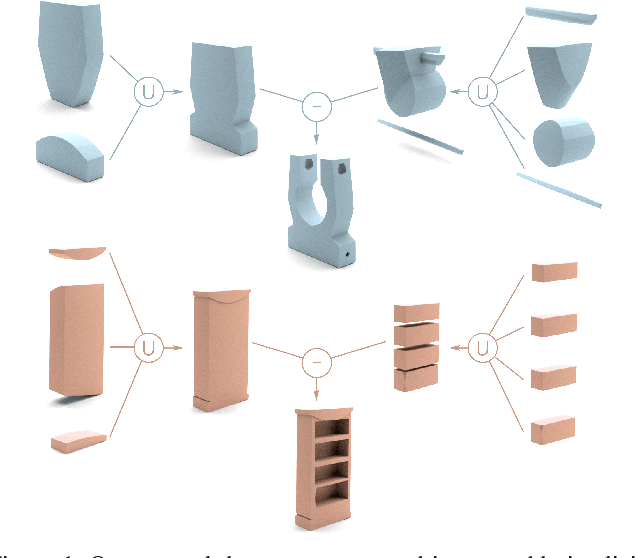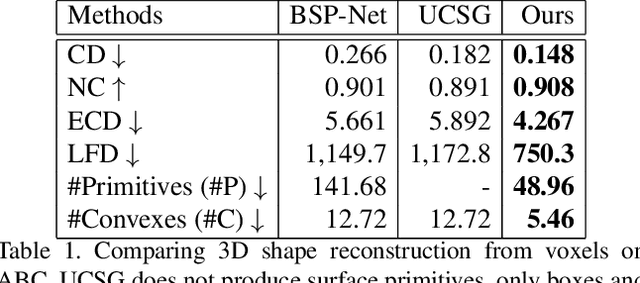Manyi Li
Pay Less Attention to Deceptive Artifacts: Robust Detection of Compressed Deepfakes on Online Social Networks
Jun 25, 2025Abstract:With the rapid advancement of deep learning, particularly through generative adversarial networks (GANs) and diffusion models (DMs), AI-generated images, or ``deepfakes", have become nearly indistinguishable from real ones. These images are widely shared across Online Social Networks (OSNs), raising concerns about their misuse. Existing deepfake detection methods overlook the ``block effects" introduced by compression in OSNs, which obscure deepfake artifacts, and primarily focus on raw images, rarely encountered in real-world scenarios. To address these challenges, we propose PLADA (Pay Less Attention to Deceptive Artifacts), a novel framework designed to tackle the lack of paired data and the ineffective use of compressed images. PLADA consists of two core modules: Block Effect Eraser (B2E), which uses a dual-stage attention mechanism to handle block effects, and Open Data Aggregation (ODA), which processes both paired and unpaired data to improve detection. Extensive experiments across 26 datasets demonstrate that PLADA achieves a remarkable balance in deepfake detection, outperforming SoTA methods in detecting deepfakes on OSNs, even with limited paired data and compression. More importantly, this work introduces the ``block effect" as a critical factor in deepfake detection, providing a robust solution for open-world scenarios. Our code is available at https://github.com/ManyiLee/PLADA.
G-DexGrasp: Generalizable Dexterous Grasping Synthesis Via Part-Aware Prior Retrieval and Prior-Assisted Generation
Mar 25, 2025Abstract:Recent advances in dexterous grasping synthesis have demonstrated significant progress in producing reasonable and plausible grasps for many task purposes. But it remains challenging to generalize to unseen object categories and diverse task instructions. In this paper, we propose G-DexGrasp, a retrieval-augmented generation approach that can produce high-quality dexterous hand configurations for unseen object categories and language-based task instructions. The key is to retrieve generalizable grasping priors, including the fine-grained contact part and the affordance-related distribution of relevant grasping instances, for the following synthesis pipeline. Specifically, the fine-grained contact part and affordance act as generalizable guidance to infer reasonable grasping configurations for unseen objects with a generative model, while the relevant grasping distribution plays as regularization to guarantee the plausibility of synthesized grasps during the subsequent refinement optimization. Our comparison experiments validate the effectiveness of our key designs for generalization and demonstrate the remarkable performance against the existing approaches. Project page: https://g-dexgrasp.github.io/
SymbioSim: Human-in-the-loop Simulation Platform for Bidirectional Continuing Learning in Human-Robot Interaction
Feb 11, 2025Abstract:The development of intelligent robots seeks to seamlessly integrate them into the human world, providing assistance and companionship in daily life and work, with the ultimate goal of achieving human-robot symbiosis. To realize this vision, robots must continuously learn and evolve through consistent interaction and collaboration with humans, while humans need to gradually develop an understanding of and trust in robots through shared experiences. However, training and testing algorithms directly on physical robots involve substantial costs and safety risks. Moreover, current robotic simulators fail to support real human participation, limiting their ability to provide authentic interaction experiences and gather valuable human feedback. In this paper, we introduce SymbioSim, a novel human-in-the-loop robotic simulation platform designed to enable the safe and efficient development, evaluation, and optimization of human-robot interactions. By leveraging a carefully designed system architecture and modules, SymbioSim delivers a natural and realistic interaction experience, facilitating bidirectional continuous learning and adaptation for both humans and robots. Extensive experiments and user studies demonstrate the platform's promising performance and highlight its potential to significantly advance research on human-robot symbiosis.
Unit Region Encoding: A Unified and Compact Geometry-aware Representation for Floorplan Applications
Jan 19, 2025Abstract:We present the Unit Region Encoding of floorplans, which is a unified and compact geometry-aware encoding representation for various applications, ranging from interior space planning, floorplan metric learning to floorplan generation tasks. The floorplans are represented as the latent encodings on a set of boundary-adaptive unit region partition based on the clustering of the proposed geometry-aware density map. The latent encodings are extracted by a trained network (URE-Net) from the input dense density map and other available semantic maps. Compared to the over-segmented rasterized images and the room-level graph structures, our representation can be flexibly adapted to different applications with the sliced unit regions while achieving higher accuracy performance and better visual quality. We conduct a variety of experiments and compare to the state-of-the-art methods on the aforementioned applications to validate the superiority of our representation, as well as extensive ablation studies to demonstrate the effect of our slicing choices.
CLIP-based Point Cloud Classification via Point Cloud to Image Translation
Aug 07, 2024Abstract:Point cloud understanding is an inherently challenging problem because of the sparse and unordered structure of the point cloud in the 3D space. Recently, Contrastive Vision-Language Pre-training (CLIP) based point cloud classification model i.e. PointCLIP has added a new direction in the point cloud classification research domain. In this method, at first multi-view depth maps are extracted from the point cloud and passed through the CLIP visual encoder. To transfer the 3D knowledge to the network, a small network called an adapter is fine-tuned on top of the CLIP visual encoder. PointCLIP has two limitations. Firstly, the point cloud depth maps lack image information which is essential for tasks like classification and recognition. Secondly, the adapter only relies on the global representation of the multi-view features. Motivated by this observation, we propose a Pretrained Point Cloud to Image Translation Network (PPCITNet) that produces generalized colored images along with additional salient visual cues to the point cloud depth maps so that it can achieve promising performance on point cloud classification and understanding. In addition, we propose a novel viewpoint adapter that combines the view feature processed by each viewpoint as well as the global intertwined knowledge that exists across the multi-view features. The experimental results demonstrate the superior performance of the proposed model over existing state-of-the-art CLIP-based models on ModelNet10, ModelNet40, and ScanobjectNN datasets.
Learning based 2D Irregular Shape Packing
Sep 19, 2023Abstract:2D irregular shape packing is a necessary step to arrange UV patches of a 3D model within a texture atlas for memory-efficient appearance rendering in computer graphics. Being a joint, combinatorial decision-making problem involving all patch positions and orientations, this problem has well-known NP-hard complexity. Prior solutions either assume a heuristic packing order or modify the upstream mesh cut and UV mapping to simplify the problem, which either limits the packing ratio or incurs robustness or generality issues. Instead, we introduce a learning-assisted 2D irregular shape packing method that achieves a high packing quality with minimal requirements from the input. Our method iteratively selects and groups subsets of UV patches into near-rectangular super patches, essentially reducing the problem to bin-packing, based on which a joint optimization is employed to further improve the packing ratio. In order to efficiently deal with large problem instances with hundreds of patches, we train deep neural policies to predict nearly rectangular patch subsets and determine their relative poses, leading to linear time scaling with the number of patches. We demonstrate the effectiveness of our method on three datasets for UV packing, where our method achieves a higher packing ratio over several widely used baselines with competitive computational speed.
AffordPose: A Large-scale Dataset of Hand-Object Interactions with Affordance-driven Hand Pose
Sep 16, 2023



Abstract:How human interact with objects depends on the functional roles of the target objects, which introduces the problem of affordance-aware hand-object interaction. It requires a large number of human demonstrations for the learning and understanding of plausible and appropriate hand-object interactions. In this work, we present AffordPose, a large-scale dataset of hand-object interactions with affordance-driven hand pose. We first annotate the specific part-level affordance labels for each object, e.g. twist, pull, handle-grasp, etc, instead of the general intents such as use or handover, to indicate the purpose and guide the localization of the hand-object interactions. The fine-grained hand-object interactions reveal the influence of hand-centered affordances on the detailed arrangement of the hand poses, yet also exhibit a certain degree of diversity. We collect a total of 26.7K hand-object interactions, each including the 3D object shape, the part-level affordance label, and the manually adjusted hand poses. The comprehensive data analysis shows the common characteristics and diversity of hand-object interactions per affordance via the parameter statistics and contacting computation. We also conduct experiments on the tasks of hand-object affordance understanding and affordance-oriented hand-object interaction generation, to validate the effectiveness of our dataset in learning the fine-grained hand-object interactions. Project page: https://github.com/GentlesJan/AffordPose.
RIM-Net: Recursive Implicit Fields for Unsupervised Learning of Hierarchical Shape Structures
Jan 30, 2022



Abstract:We introduce RIM-Net, a neural network which learns recursive implicit fields for unsupervised inference of hierarchical shape structures. Our network recursively decomposes an input 3D shape into two parts, resulting in a binary tree hierarchy. Each level of the tree corresponds to an assembly of shape parts, represented as implicit functions, to reconstruct the input shape. At each node of the tree, simultaneous feature decoding and shape decomposition are carried out by their respective feature and part decoders, with weight sharing across the same hierarchy level. As an implicit field decoder, the part decoder is designed to decompose a sub-shape, via a two-way branched reconstruction, where each branch predicts a set of parameters defining a Gaussian to serve as a local point distribution for shape reconstruction. With reconstruction losses accounted for at each hierarchy level and a decomposition loss at each node, our network training does not require any ground-truth segmentations, let alone hierarchies. Through extensive experiments and comparisons to state-of-the-art alternatives, we demonstrate the quality, consistency, and interpretability of hierarchical structural inference by RIM-Net.
CAPRI-Net: Learning Compact CAD Shapes with Adaptive Primitive Assembly
Apr 12, 2021



Abstract:We introduce CAPRI-Net, a neural network for learning compact and interpretable implicit representations of 3D computer-aided design (CAD) models, in the form of adaptive primitive assemblies. Our network takes an input 3D shape that can be provided as a point cloud or voxel grids, and reconstructs it by a compact assembly of quadric surface primitives via constructive solid geometry (CSG) operations. The network is self-supervised with a reconstruction loss, leading to faithful 3D reconstructions with sharp edges and plausible CSG trees, without any ground-truth shape assemblies. While the parametric nature of CAD models does make them more predictable locally, at the shape level, there is a great deal of structural and topological variations, which present a significant generalizability challenge to state-of-the-art neural models for 3D shapes. Our network addresses this challenge by adaptive training with respect to each test shape, with which we fine-tune the network that was pre-trained on a model collection. We evaluate our learning framework on both ShapeNet and ABC, the largest and most diverse CAD dataset to date, in terms of reconstruction quality, shape edges, compactness, and interpretability, to demonstrate superiority over current alternatives suitable for neural CAD reconstruction.
D$^2$IM-Net: Learning Detail Disentangled Implicit Fields from Single Images
Dec 17, 2020



Abstract:We present the first single-view 3D reconstruction network aimed at recovering geometric details from an input image which encompass both topological shape structures and surface features. Our key idea is to train the network to learn a detail disentangled reconstruction consisting of two functions, one implicit field representing the coarse 3D shape and the other capturing the details. Given an input image, our network, coined D$^2$IM-Net, encodes it into global and local features which are respectively fed into two decoders. The base decoder uses the global features to reconstruct a coarse implicit field, while the detail decoder reconstructs, from the local features, two displacement maps, defined over the front and back sides of the captured object. The final 3D reconstruction is a fusion between the base shape and the displacement maps, with three losses enforcing the recovery of coarse shape, overall structure, and surface details via a novel Laplacian term.
 Add to Chrome
Add to Chrome Add to Firefox
Add to Firefox Add to Edge
Add to Edge